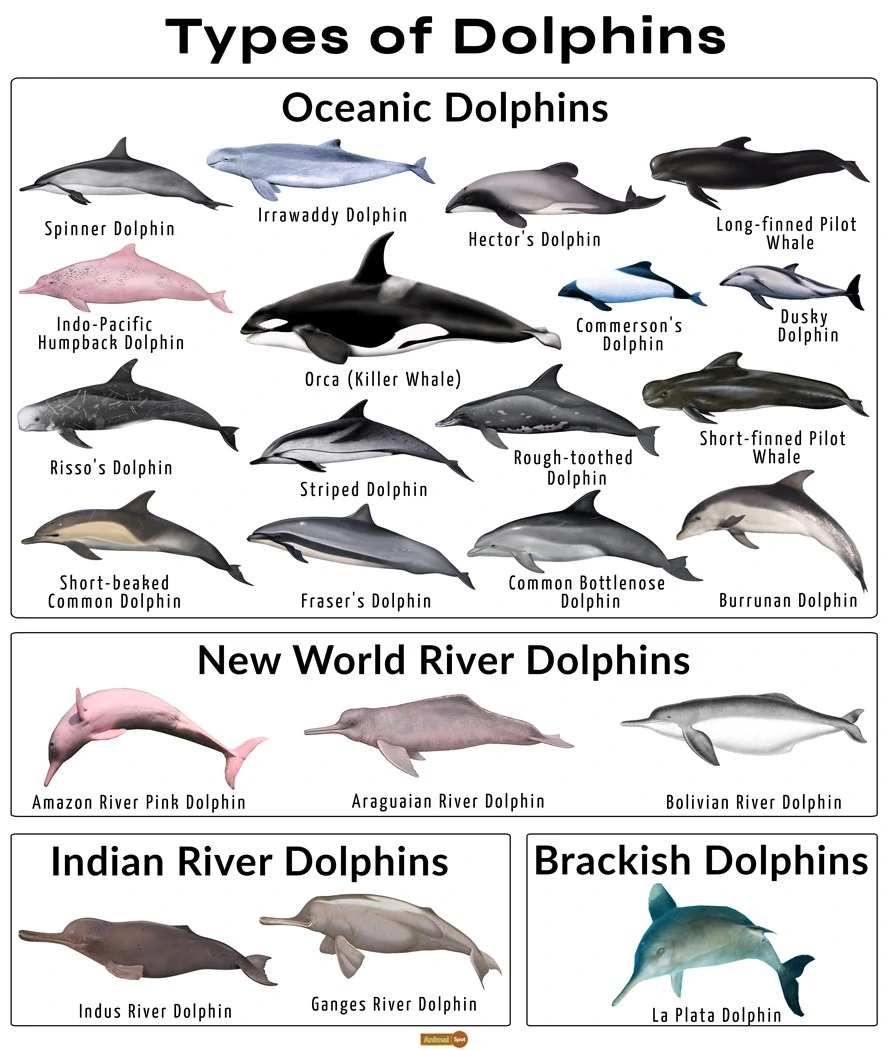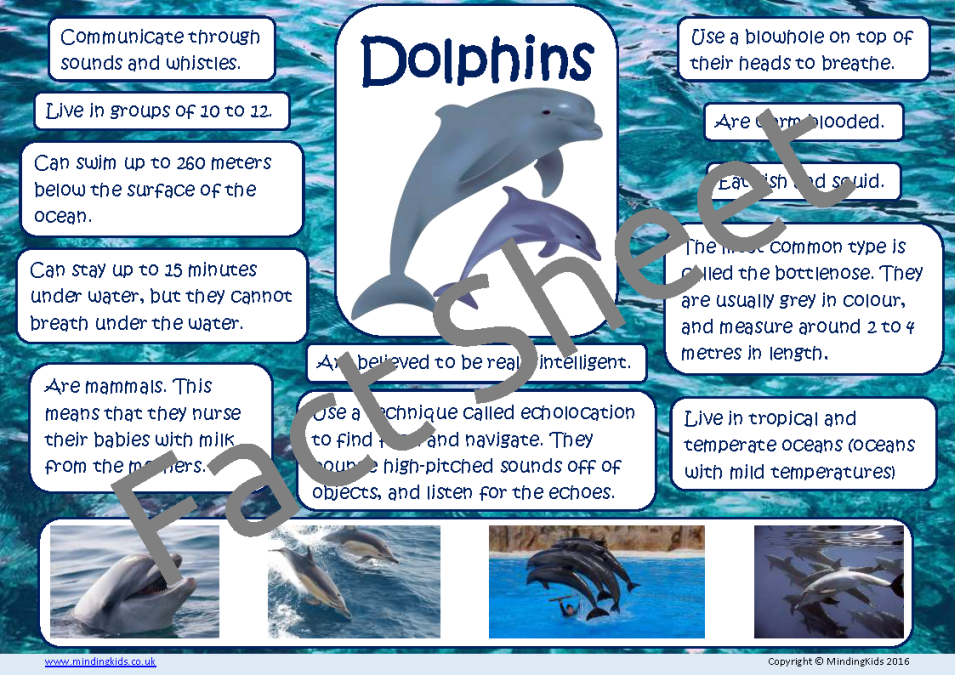Discover one of the most Intriguing Dolphin Facts About Their Communication Skills
Discover one of the most Intriguing Dolphin Facts About Their Communication Skills
Blog Article
Study the Ocean: Fascinating Dolphin Truths for Ocean Lovers
The world of dolphins presents an interesting intersection of knowledge, social behavior, and environmental significance. From their intricate communication techniques to their impressive analytic capabilities, dolphins test our understanding of animal intelligence.
Dolphin Variety Diversity
Variety is a hallmark of the dolphin family members, encompassing a vast array of types that show distinct physical attributes, behaviors, and habitats. The family members Delphinidae, typically called oceanic dolphins, makes up about 37 species, each adapted to details ecological specific niches. For instance, the bottlenose dolphin (Tursiops truncatus) is renowned for its intelligence and adaptability, growing in both open and coastal sea settings.
In comparison, the orca (Orcinus orca), frequently referred to as the killer whale, is the biggest participant of the dolphin family members and is characterized by its striking black-and-white coloration. Orcas demonstrate complicated social frameworks and searching techniques, showcasing the behavioral diversity within the household. Various other types, such as the rewriter dolphin (Stenella longirostris), are kept in mind for their acrobatic display screens and choice for warmer waters, highlighting the adaptability of dolphins to various marine communities.
Furthermore, river dolphins, consisting of the pink river dolphin (Inia geoffrensis), live in freshwater environments, better showing the varied environments that dolphins inhabit. Dolphin Facts. This unbelievable variety not just enhances marine communities however likewise highlights the significance of conservation efforts to safeguard these amazing creatures and their environments
Social Behavior and Interaction
The complex social behavior and interaction approaches of dolphins are crucial parts of their presence, helping with group cohesion and boosting survival. These very intelligent aquatic mammals exhibit facility social structures, commonly forming shucks that can range from a couple of people to over a hundred. Within these groups, dolphins engage in actions such as participating hunting, social play, and mutual security, which foster solid bonds amongst members.
Dolphins make use of a sophisticated array of vocalizations, including clicks, whistles, and body movement, to convey information and reveal emotions. Their signature whistles offer as special identifiers, akin to names, enabling people to call out to each other. This singing interaction is complemented by non-verbal signals, such as jumping, slapping the water, and synchronized swimming, which further boosts their interactions.

Distinct Feeding Routines
Special feeding practices characterize dolphins, showcasing their adaptability and knowledge in different aquatic settings. These aquatic animals are known for their varied diets, which largely are composed of fish, squid, and crustaceans. Their hunting techniques can vary considerably, commonly customized to the certain victim and environmental problems.
One notable approach is cooperative searching, where dolphins operate in teams to herd colleges of fish right into tight developments, making it simpler for people to catch their dish. This social behavior not just improves their feeding performance however likewise enhances social bonds within the capsule. In addition, dolphins have actually been observed employing a strategy called "fish-whacking," where they use their tails to confuse or stun fish, assisting in easier capture.
One more remarkable feeding practice is echolocation, which allows dolphins to identify prey also in site web murky waters. On the whole, the one-of-a-kind feeding practices of dolphins highlight their role as proficient killers within the marine environment, showing both intelligence and resourcefulness.
Knowledge and Problem Addressing
Their knowledge is noticeable in their analytic abilities, social communications, and capacity for discovering. Study has actually shown that dolphins can make use of tools, such as utilizing aquatic sponges to shield their rostrums while foraging on the seafloor.
Moreover, dolphins display innovative interaction skills, employing a complex system of clicks, whistles, and body language. Dolphin Facts. This interaction is vital for collaborating group tasks, such as searching and interacting socially, highlighting their ability to work jointly in the direction of an usual objective. Their capacity to recognize abstract concepts, including self-recognition in mirrors, even more highlights their cognitive sophistication
In regulated research studies, dolphins have shown an ability to solve puzzles and do tasks that call see here for both memory and important reasoning. These interactions show not only intelligence however likewise a desire to engage with their atmosphere in novel ways. Overall, the cognitive prowess of dolphins places them among one of the most smart varieties in the world, cultivating a much deeper recognition for their duty in marine ecosystems.
Preservation and Environmental Impact
Conservation efforts intended at securing marine environments are crucial for protecting dolphin populations and their environments. Dolphins are very sensitive to ecological changes, and their survival is elaborately linked to the health of oceanic ecosystems. Overfishing, pollution, and environment modification pose considerable risks to both dolphins and their settings.
Overfishing interrupts the food web, causing a decline in target types vital for dolphin survival. Pollutants such as chemicals and plastics accumulate in marine atmospheres, threatening dolphins via consumption and bioaccumulation. Increased water temperatures and sea acidification, effects of climate change, even more endanger the delicate equilibrium of marine ecological communities, affecting dolphin reproduction and migratory patterns.
Conservation campaigns, including the establishment of marine secured areas (MPAs), play a vital function in safeguarding these intelligent animals. MPAs help alleviate human impact, enabling ecological communities to recoup and grow. Public understanding projects and area engagement are likewise crucial, fostering a culture of stewardship towards aquatic life. By prioritizing conservation initiatives, we can make certain that future generations delight in the appeal and vigor of dolphins and the seas they occupy. Securing marine communities is not nearly saving dolphins; it is regarding maintaining the intricate web of life that sustains all of us.
Verdict
Dolphins exhibit the intricacy and richness of marine life through their diverse types, detailed social structures, and advanced cognitive capabilities. As essential elements of aquatic ecological communities, dolphins highlight the necessity of ongoing preservation efforts to safeguard their environments.
Various other species, such as the rewriter dolphin (Stenella longirostris), are kept in mind for their acrobatic screens and preference for warmer waters, highlighting the versatility of dolphins to different aquatic communities.
In general, the unique feeding behaviors of dolphins highlight their function as experienced killers within the marine ecosystem, demonstrating both intelligence and resourcefulness.
Overall, the cognitive expertise of dolphins places them amongst the most intelligent varieties on the world, fostering a much deeper recognition for their duty in aquatic ecological communities.

Report this page